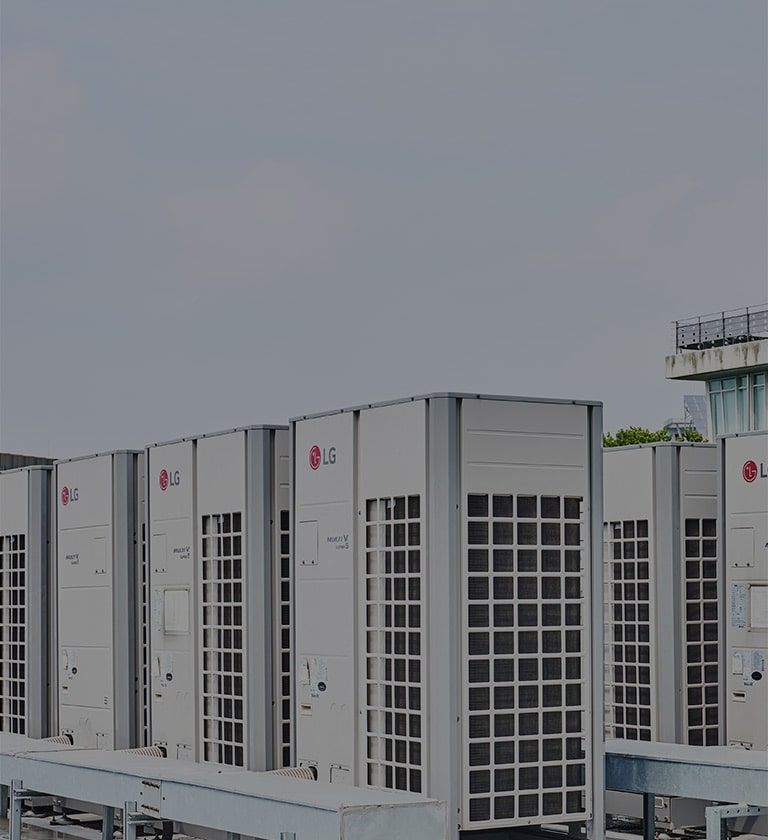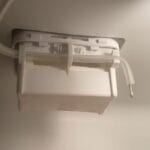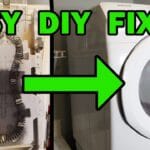LG split air conditioners are popular for their efficiency and reliability. But like any appliance, they can face issues.
Understanding how to troubleshoot your LG split air conditioner can save you time and money. It helps to know common problems and how to fix them. This guide aims to empower you with simple steps to address minor glitches. Whether it’s a cooling issue or a strange noise, a little know-how can go a long way.
Stay comfortable and prolong the life of your unit with these practical troubleshooting tips. Let’s dive in and solve those pesky problems together.
Common Issues
LG split air conditioners are reliable. But like any appliance, they can face issues. Knowing common problems helps in quick troubleshooting. Here are a few frequent issues users encounter.
No Power
If your LG split air conditioner won’t turn on, check the power source first. Ensure the unit is plugged in properly. Check the circuit breaker. It might have tripped. Reset it if necessary. Also, inspect the power cord for damage.
Poor Cooling
Poor cooling can frustrate you during hot days. First, check the thermostat settings. Ensure it’s set to the desired temperature. Clean the air filter. Dust and debris can block airflow. Also, check if the outdoor unit is clear of obstructions.
Unusual Noises
Strange noises from your air conditioner can be alarming. A buzzing sound might indicate a loose part. A whistling noise suggests a possible refrigerant leak. Rattling could mean something is stuck in the fan. Turn off the unit and inspect it.
Basic Checks
If your LG split air conditioner is not functioning properly, there are some basic checks you can perform before calling a technician. These checks can often solve common issues quickly and easily.
Power Supply
Ensure that the power supply to your air conditioner is stable. Check if the unit is properly plugged in. Inspect the circuit breaker or fuse box. Confirm that the breaker has not tripped or the fuse has not blown. If the power supply is disrupted, the air conditioner will not operate.
Remote Control
Check the remote control for any issues. Ensure that the batteries are working and properly inserted. Test the remote by using it with another device, if possible. Clean the remote control sensor on the unit to make sure it can receive signals.
Thermostat Settings
Verify the thermostat settings on your air conditioner. Ensure that the temperature is set correctly. The unit may not cool if the thermostat is set too high. Set the thermostat to a lower temperature and check if the unit starts cooling.
| Basic Check | Action |
|---|---|
| Power Supply | Check plug, circuit breaker, and fuse |
| Remote Control | Inspect batteries and clean sensor |
| Thermostat Settings | Set to a lower temperature |
Cleaning Filters
Maintaining clean filters in your LG Split Air Conditioner is crucial. Dirty filters can impact the efficiency and performance of your unit. Regular cleaning ensures you enjoy fresh, cool air and prolongs the life of your AC.
Removing Filters
First, turn off the air conditioner and unplug it. This is for safety. Open the front panel of the unit. You will find the filters inside. Hold the filters by their edges. Pull them out gently to avoid any damage.
Cleaning Process
Now, it’s time to clean the filters. Use a vacuum cleaner to remove dust from the surface. For a deeper clean, wash the filters with lukewarm water. Use a mild detergent if necessary. Rinse thoroughly to remove any soap residue. Let the filters dry completely before reinstalling them.
Reinstalling Filters
Once the filters are dry, slide them back into their slots. Ensure they fit snugly. Close the front panel of the air conditioner. Plug the unit back in and turn it on. Your AC should now run more efficiently with clean filters.
Addressing Leaks
Leaks in your LG split air conditioner can be frustrating. They can also lead to bigger problems. Understanding the types of leaks and their causes can help you fix them. Here, we address common leaks, including water leaks, refrigerant leaks, and drainage issues.
Water Leaks
Water leaks are one of the most common issues. They can be caused by several factors. The condensation drain line might be clogged. If the drain line is blocked, water backs up and leaks out. Check the drain line regularly.
Another cause could be a dirty air filter. When the air filter is dirty, airflow is restricted. This can cause the evaporator coils to freeze. When the ice melts, it causes water to leak. Clean or replace the air filter every few months.
Refrigerant Leaks
Refrigerant leaks are more serious. They affect the cooling efficiency of your unit. If your AC isn’t cooling well, you might have a refrigerant leak.
Signs of refrigerant leaks include:
- Hissing or bubbling noise
- Ice build-up on the evaporator coils
- Higher energy bills
Refrigerant leaks should be fixed by a professional. They can locate the leak and repair it properly. Do not attempt to fix refrigerant leaks on your own.
Drainage Issues
Proper drainage is crucial for your AC’s performance. If water isn’t draining correctly, it can cause leaks. Check the drainage pan. If it’s full, empty it. Ensure the pan is positioned correctly.
The drain pipe could also be the problem. It might be clogged or broken. Inspect the pipe for any blockages. Use a wet/dry vacuum to clear out any debris. If the pipe is damaged, replace it.
By addressing these common issues, you can keep your LG split air conditioner running smoothly. Regular maintenance is key to preventing leaks and ensuring efficiency.
Fixing Sensor Problems
Is your LG split air conditioner not working properly? Sensors might be the issue. Sensors control the unit’s temperature, humidity, and communication with the remote. Knowing how to fix these can save you time and money. Let’s break down the common sensor problems and how to resolve them.
Temperature Sensor
The temperature sensor in your LG air conditioner measures room temperature. If it fails, the unit might not cool properly.
- Check the sensor’s connection to the control board. Loose wires can cause issues.
- Use a multimeter to test the sensor. It should show resistance changes with temperature.
- If the sensor is faulty, replace it. This is a simple part to swap out.
Ensuring the temperature sensor is working correctly keeps your room comfortable.
Humidity Sensor
The humidity sensor manages the moisture levels in the room. If the room feels sticky, this sensor may be at fault.
- Locate the sensor, usually near the evaporator coils.
- Ensure the sensor is clean. Dust can interfere with its function.
- Test the sensor with a multimeter. A faulty reading means it needs replacement.
A working humidity sensor ensures your room stays dry and comfortable.
Remote Sensor
The remote sensor receives signals from your remote control. If the air conditioner doesn’t respond to the remote, this sensor might be the issue.
- Check the sensor for any obstructions. Clear any objects blocking the signal.
- Test the remote control batteries. Weak batteries can cause signal issues.
- Inspect the sensor for dust or dirt. Clean it gently with a soft cloth.
- If the problem persists, the sensor may need replacement.
Fixing the remote sensor helps you control your air conditioner with ease.
Credit: www.lg.com
Fan And Motor Troubles
LG split air conditioners are known for their efficiency and reliability. But like any machine, they can face issues. The most common problems often revolve around the fan and motor. Understanding these issues can help you address them quickly and keep your air conditioner running smoothly.
Fan Not Working
If the fan is not working, the air conditioner cannot cool the room effectively. This can be due to several reasons:
- Power supply issues: Ensure the unit is plugged in and receiving power.
- Faulty fan motor: The motor may need replacement.
- Blocked air filters: Clean or replace the filters.
- Thermostat settings: Ensure the thermostat is set correctly.
To troubleshoot, start by checking the power supply. Next, inspect the fan motor and air filters. Adjust the thermostat settings if necessary.
Motor Overheating
An overheating motor can cause the air conditioner to shut down or operate inefficiently. This issue can stem from:
- Lack of lubrication: Ensure the motor is well-lubricated.
- Dirty components: Clean the motor and surrounding parts.
- Obstructed airflow: Remove any blockages near the motor.
- Electrical issues: Check for any loose or damaged wires.
To resolve overheating, start by lubricating the motor. Clean the motor and remove any obstructions. Inspect the wiring for damage.
Strange Sounds
Strange sounds from your air conditioner can indicate a problem with the fan or motor. Common causes include:
- Loose parts: Tighten any loose screws or bolts.
- Worn-out bearings: Replace the bearings if they are worn.
- Debris: Remove any debris lodged in the unit.
- Fan blade issues: Inspect and adjust the fan blades.
To address strange sounds, start by tightening loose parts. Replace worn bearings and remove debris. Check and adjust the fan blades.
Electrical Issues
Dealing with electrical issues in your LG Split Air Conditioner can be frustrating. Identifying the root cause is crucial. Let’s explore some common electrical problems and their solutions.
Circuit Breaker
If your air conditioner won’t turn on, check the circuit breaker. A tripped breaker may indicate an overload. Resetting the breaker might solve the issue. If it trips again, there may be a more serious problem.
- Locate the breaker panel.
- Find the breaker labeled “AC” or “Air Conditioner”.
- Reset the breaker by flipping it off and on.
If resetting doesn’t work, consult an electrician. There could be an underlying issue.
Wiring Problems
Faulty wiring can cause your air conditioner to malfunction. Loose or damaged wires may disrupt the electrical flow. Inspect the wiring for visible damage.
Steps to check wiring:
- Turn off the power to the unit.
- Remove the cover to access the wiring.
- Look for loose, frayed, or burnt wires.
- Tighten any loose connections.
If you see any damage, replace the wires or call a professional. Proper wiring ensures safe operation.
Capacitor Issues
The capacitor is a small but vital component. It helps start the compressor and fan motor. If the capacitor fails, the unit won’t function properly.
Signs of a bad capacitor:
- Humming noise from the unit
- Unit not starting
- Burning smell
To check the capacitor:
- Turn off the power to the unit.
- Locate the capacitor (usually a cylindrical object).
- Use a multimeter to test the capacitance.
If the readings are off, replace the capacitor. This should restore normal function.

Credit: www.lg.com
Professional Help
If you are struggling with your LG split air conditioner, you might need professional help. Sometimes, issues go beyond simple fixes. Knowing when to call a technician can save you time and money. Let’s explore the key points.
When To Call A Technician
Some problems require expert attention. Call a technician if you notice these signs:
- Strange noises: Unusual sounds may indicate internal damage.
- Water leakage: Leakage can be a sign of a blocked drain or refrigerant issue.
- Weak airflow: Poor airflow might mean a clogged filter or blower problem.
- Frequent cycling: The unit turns on and off too often.
Choosing A Service Provider
Finding the right service provider is crucial. Consider these factors:
| Factor | Details |
|---|---|
| Experience | Look for technicians with years of experience. |
| Reviews | Check online reviews and ratings for honest feedback. |
| Certification | Ensure the technician is certified and trained. |
| Warranty | Ask if the service includes a warranty. |
Maintenance Tips
Regular maintenance can prevent many issues. Here are some tips:
- Clean filters: Dust filters every three months.
- Inspect ducts: Check ducts for blockages or leaks.
- Check thermostat: Ensure the thermostat works properly.
- Service annually: Schedule annual professional servicing.
Following these tips will keep your LG split air conditioner running smoothly.

Credit: www.youtube.com
Frequently Asked Questions
Why Is My Lg Split Ac Not Cooling?
Check if the thermostat is set to “cool” mode. Ensure the air filter is clean.
How To Reset My Lg Split Air Conditioner?
Turn off the unit and unplug it for 30 seconds. Then, plug it back in and turn it on.
What Does The Ch Error Code Mean?
The CH error code indicates a problem with the unit’s sensors. Contact a technician for assistance.
Why Does My Lg Split Ac Leak Water?
Water leakage can be due to a clogged drain pipe. Clean the pipe to fix the issue.
How Often Should I Clean My Lg Split Ac Filter?
Clean the air filter every two weeks. Regular cleaning ensures efficient cooling and extends the unit’s life.
Conclusion
Troubleshooting your LG split air conditioner can be simple. Follow the steps mentioned. Check filters, thermostat settings, and power supply. Regular maintenance prevents many issues. If problems persist, contact professional help. Proper care keeps your AC running efficiently. Stay cool and comfortable all year.
Always refer to the user manual for specific guidance. A well-maintained AC ensures a pleasant environment. Happy cooling!




